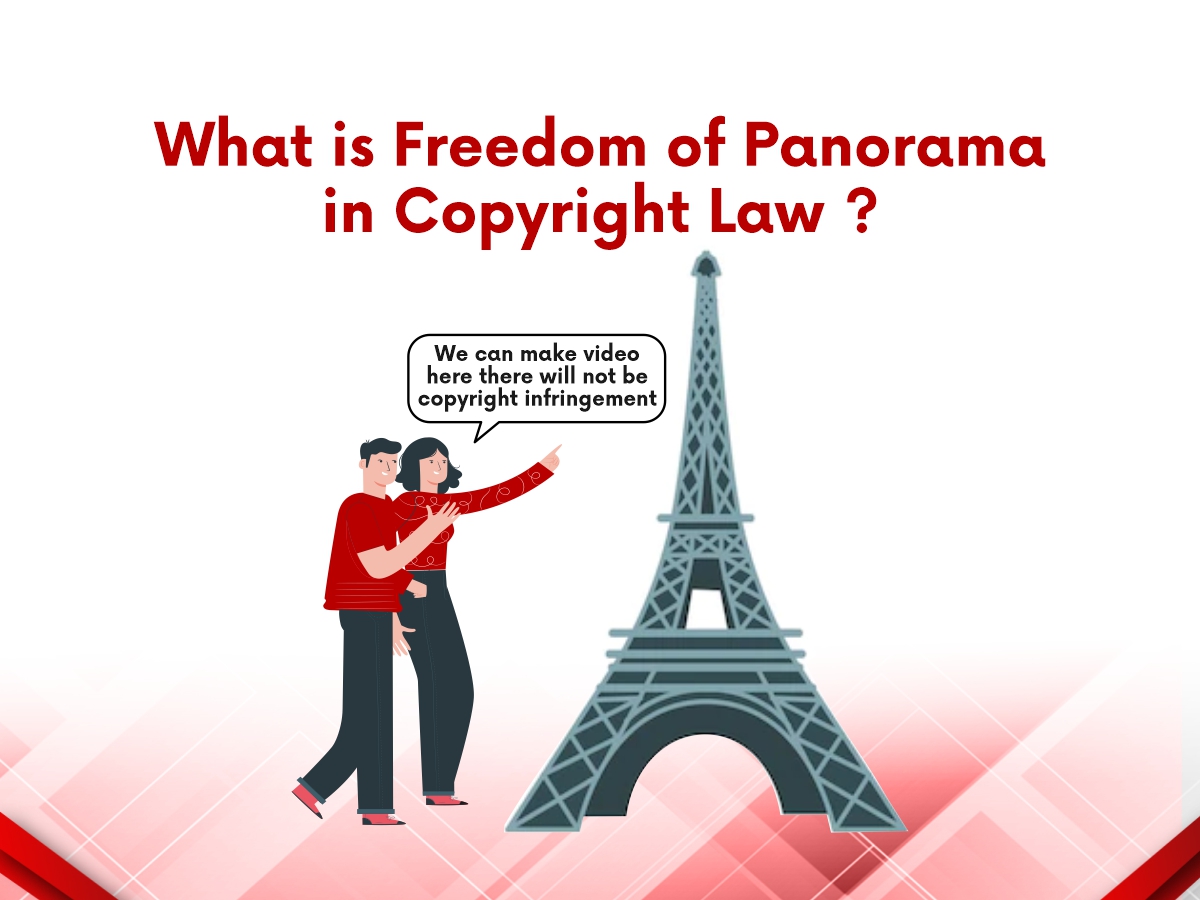Subscribe our newsletter
Please Subscribe our news letter and get update.

Freedom of Panorama is taken from the German word “Panoramafreiheit”.
In the F.O.P individuals have the right to publish images of public buildings and public structures that are permanently attached to public locations, and this is one of the exceptions to the Copyright law. The “French-Italian model” and the “German-English model” are the two modular frameworks on which panorama freedom is based. On the one hand, the French-Italian model does not include any restrictions on the copyright law, whereas the German-English model specifies freedom of panorama as an exception to the copyright law. The German-English model has been implemented into the Indian Copyright Act, with some alterations to suit the Indian situation.
It is a legal right in several countries. The European Copyright Directive gave rise to this exception in 2001. The ECD empowers, member countries to incorporate a freedom of panorama clause in their copyright legislation., but it is not mandatory.
In 2015, during the process of amending the European Union, freedom of panorama was one of the most highly debated and complex issues. A recommendation that Freedom of Panorama, as defined in Article 5 (3)(h) of the should be made mandatory in all European Union countries sparked the debate. However, according to the final report of the amendment proposed by the EU Parliament’s Legal Affairs Committee, “commercial use of photographs, video footage, or other images of works permanently situated in physical public places must always be subject to the authors’ prior copyright approval.”
Thankfully, the European Parliament voted against restricting commercial use of images or movies taken in actual public areas without permission, leaving nations to apply Freedom of Panorama in accordance with their respective copyright laws.
Now, Panorama freedom is included and interpreted differently in different jurisdictions, depending on each country’s own copyright rules. The majority of countries openly permit panorama freedom, while others interpret it differently, and a few countries impose restrictions and limitations on this copyright exception.
The majority of common law countries, including Australia, New Zealand, the United Kingdom, and India, recognize Panorama of Freedom. On the other hand, European countries show a huge disparity in its recognition and implementation; for example, in France, the freedom of panorama is not statutorily established, leaving interpretation to the courts; other countries, such as Denmark and Spain, have introduced this exception, but with restrictions on reproductions made for private, rather than commercial purposes.
Even though there is no provision clearly establishing the Freedom of Panorama in the Indian context, the Copyright Act, 1957, Section 52 sub-clause (t) and sub-clause (u) include provisions relevant to the Freedom of Panorama Section. 52(t) says that copyright infringement does not apply to the creation or publication of a painting, drawing, engraving, or photograph of a sculpture, or any other work of artistic handicraft, permanently displayed in a public place or on premises to which the public has access. Section 52(u) has expanded the scope of the freedom of panorama to include cinematographic films.
The following additions in cinematographic films do not constitute copyright infringement, according to sub-clause (u):-
Because of the foregoing principles, India’s copyright laws expressly acknowledge and permit Freedom of Panorama without limitations or restrictions. As a result, images of public artworks, monuments, or structures in India can be published and distributed without fear of copyright infringement, whether for commercial or personal purposes.
Please Subscribe our news letter and get update.
© Copyright 2024 – Wissen Research All Rights Reserved.